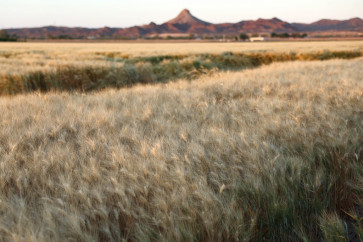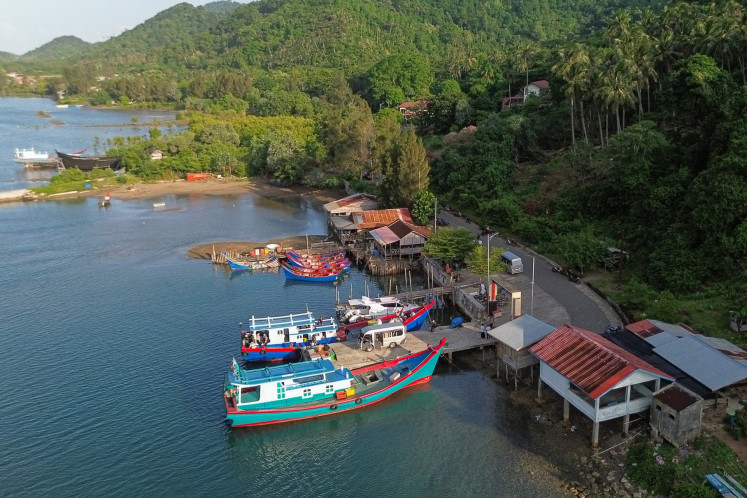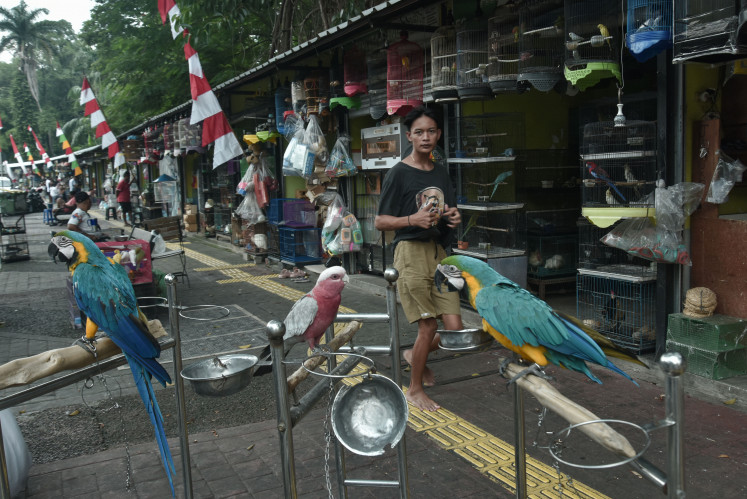Popular Reads
Top Results
Can't find what you're looking for?
View all search resultsPopular Reads
Top Results
Can't find what you're looking for?
View all search resultsDistilling arak as a way of life
High in the sharply volcanic up thrusts of central Bali's green mountains, life progresses as it has for hundreds of years
Change text size
Gift Premium Articles
to Anyone
High in the sharply volcanic up thrusts of central Bali's green mountains, life progresses as it has for hundreds of years.
Yes there are asphalt roads, electricity, trucks and traffic, but stepping through a villager's gate casts you back a century or more.
This is where people still make do for themselves; they are self sufficient and can scratch a living out of the soil. Mangoes drip from trees, coffee is harvested, chickens cluck contentedly and pigs snort with the fun of living. This is the old Bali, the paradise that once was.
This is also the home of arak maker, Pak Nyoman Kaler.
At 65 years of age, Kaler, who speaks only Balinese, is a wiry, thin little chap, but give him 60 kilograms to lift and he can throw it over his head like a ball, lay on 70 kilograms and he dances the weight, as if with a small child.
Betel nut stains his mouth; when he laughs his teeth looks like the keys of a piano, the upper half black, the lower white.
Kaler is joyous. He has his family and his work. For the past 200 years or so, he and his ancestors before him have distilled arak from the naturally fermented local drink called tuak.
Tuak is harvested from the juice of coconuts and sago plants that naturally ferment to produce alcohol.
Balinese arak, unlike the aniseed flavored Arabic arak from Iran, Palestine and Syria, is made from coconut tuak.
Pak Kaler nurses his backyard arak still, keeping its cooking fire low to ensure a constant temperature for the coconut trunk that forms his still. The base of the tree is carved out forming a hollow and its bowl shape is ideal for stills.
"I've been making arak for the past 20 years. I learned from my father and he learned to make it from his father before him. My family has been making arak for more than three generations," says Kaler proudly, checking the still's lines for the evaporating alcohol that will cool in a jerrican to become arak.
In an age-old family tradition, Kaler does not sell his homemade arak, but rather gives it to neighbors and friends.
give a couple of bottles to neighbors here and there," Kaler says, adding that he rarely drinks.occasionally have a glass straight from the jerrican to check the flavor and quality, but Idrink very often."
Kaler stresses that arak is a natural product and part of the Balinese way of life.arak is not like making other types of alcohol. It's a natural product from the earth and it's good for people, if they don't drink too much,"
While alcohol production is frowned upon and the subject of police raids in Java and other parts of Indonesia, its distillation in Bali is part of the social and religious tapestry of the island.
"I don't see it (arak) as alcohol. It can't be illegal because it comes from nature," Kaler says.
Powerfully alcoholic at around 70 percent, the best quality arak is used only for medicinal and religious purposes, while the second and third quality drinking arak is much lower in alcoholic volume. "Balinese use arak in rituals, such as the mecaru. The arak is poured on the ground as a libation for Mother Earth.
"We use first quality arak as an antiseptic on wounds. The arak kills bacteria. We also use arak for people with mental illness. We pound the arak with medicinal herbs and then the patient inhales a tiny amount of the mixture," Kaler says.
He added that many elderly people take a small glass of second-or third-grade arak before sleeping.
Called Sloki, the arak, used as a sleeping draught, helps elderly sleep through the night by reducing the aches and pains of old age.
Balinese interpreter for Pak Kaler, Wayan Suriada, stresses that arak should only be drunk in moderation.anything in life, even eating suckling pig, we need to do things in moderation. I think because children here in Bali grow up with arak around them, they do not feel the same need to experiment and rebel by drinking to excess as young people do in other parts of the country," Wayan says.
Alcohol abuse and prohibition are old chums. The speakeasies and moonshine whiskey culture of 1920's America is a well documented snapshot of societal response to prohibition on alcohol; a time when people swilled grog down as fast as possible.
This dangerous response to social prohibition is today being seen in Java, according to artist Nick Mangan, who recently traveled across Java meeting local artists.
"They (young people) get so incredibly drunk in Java. The kids are mixing beer or hard spirits like vodka with mosquito repellant and cigarette ash to get drunk faster. They then ride their motor bikes. It is terrifying to watch them," Nick says.
Dutchman and regular visitor to Indonesia, Net Smit, agrees. am really shocked by what I am seeing. In almost every nightclub across Java girls are dancing on bars and getting really drunk....
"This is newI have been coming to Indonesia for many years and have only seen this developing in the past two years. I feel it is because the girls are rebelling against strict upbringings, but its extreme and putting them at risk," says Net, who enjoys a drink with friends, but draws the line at binge drinking.
In an ironic twist, the first still or alembic for alcohol distillation was invented by the Muslim scientist, Jabir ibn Hayyan hundreds of years ago. Those early stills were used to make perfume and black kohl eye makeup before being introduced to Spain where the alembic's use in making alcohol was quickly recognized. The name alcohol comes from the Arabic word al-kohl, according to Wikipedia.










